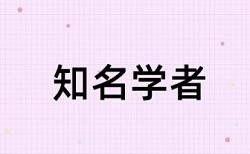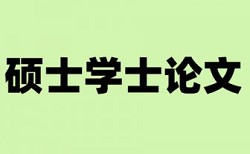
汇总了【100个】与外贸函电相关论文提纲,为广大毕业生和职称者推荐外贸函电论文提纲范本大全,解决在校大学生不知道外贸函电论文大纲如何写等相关问题!
五、从批评话语分析理论的角度分析外贸函电论文提纲
Acknowledgements
Abstract
摘要
Chapter 1 Introduction
1-1 Motivation and purpose of the study
1-2 Significance of the study
1-3 Structure of the thesis
Chapter 2 Literature Review
2-1 General study on foreign trade correspondence
2-1-1 Definition of foreign trade correspondence
2-1-2 Motives of foreign trade correspondence
2-1-3 Classification of foreign trade correspondence
2-1-4 Previous research on foreign trade correspondence
2-2 General studies on critical discourse analysis
2-2-1 The origin and evolution of CDA
2-2-2 Previous research on CDA
Chapter 3 Theoretical Framework
3-1 Criticism and discourse
3-2 The major principles of critical discourse
3-3 Major theories
3-3-1 Critical discourse and power control
3-3-2 Critical discourse and cultural diversity
3-3-3 Critical discourse and ideology
3-3-4 Critical discourse and social communication
3-4 Summary
Chapter 4 Study on Foreign Trade Correspondence from the perspectives of Critical Discourse Analysis Theory
4-1 The setup of framework of CDA on foreign trade correspondence
4-1-1 CDA on foreign trade correspondence from power control
4-1-2 CDA on foreign trade correspondence from conversational level
4-1-3 CDA on foreign trade correspondence from ideological level
4-1-4 CDA on foreign trade correspondence from social level
4-2 Case Analysis
4-2-1 Inquiry from the perspective of CDA
4-2-2 Offer from the perspective of CDA
4-2-3 Counter offer from the perspective of CDA
4-2-4 Acceptance from the perspective of CDA
4-3 Major elements in foreign trade correspondence from the perspectives of CDA
4-3-1 Discourse arrangements
4-3-2 Language organization
4-3-3 Speaking manner
4-3-4 Speaking strategies
Chapter 5 Conclusion
5-1 Major findings of the thesis
5-2 Limitations of the thesis and suggestions for further study
Bibliography
附录 攻读硕士学位期间发表的学术论文
四、从合作原则视角看外贸函电翻译论文提纲范文
Abstract
摘要
Introduction
0-1 Background of the Thesis
0-2 Significance of the Thesis
0-3 Research Questions and Data Collection
Chapter 1 Overview of the Translation of Foreign Trade Correspondence
1-1 Brief Introduction of the Foreign Trade Correspondence
1-1-1 Definition of the Foreign Trade Correspondence
1-1-2 Brief Information of Foreign Trade Correspondence
1-2 The Domestic Research on the Translation of Foreign Trade Correspondence
1-3 The Foreign Research on the Foreign Trade Correspondence
Chapter 2 Statement of the Cooperative Principle
2-1 The Background of the Cooperative Principle
2-2 The Contents of the Cooperative Principle
2-3 Violation of the Maxims
2-4 Significance of the Cooperative Principle
Chapter 3 Features of Foreign Trade Correspondence
3-1 Features of the Words
3-1-1 The Polysemy
3-1-2 Abbreviations
3-1-3 Trade Terms
3-1-4 Archaic Words
3-2 Syntactic Features of Foreign Trade Correspondence
3-2-1 Passive Voice in Foreign Trade Correspondence
3-2-2 Subordinate Clauses
3-3 Discourse Features of Foreign Trade Correspondence
3-3-1 Completeness
3-3-2 Conciseness and Correctness
3-3-3 Consideration
Chapter 4 Application of the Cooperative Principle to Translation of Foreign Trade Correspondence
4-1 The Definition of Translation
4-2 The Criteria of Translation
4-2-1 Criteria from Chinese Scholars
4-2-2 Criteria from Western Scholars
4-3 Applicability to the Translation
4-3-1 Feasibility of Cooperative Principle to the Written Documents
4-3-2 The Cooperative Principle and Translation of the Foreign Trade Correspondence
4-4 The Application of the Maxims of the Cooperative Principle
4-4-1 Maxim of Quantity
4-4-2 Maxim of Quality
4-4-3 Maxim of Relation
4-4-4 Maxim of Manner
Conclusion
Bibliography
Acknowledgements
攻读学位期间发表的论文
三、中西外贸函电语篇的体裁对比研究论文提纲格式范文模板
Acknowledgements
Academic Achievements
摘要
Abstract
Table of Contents
List of Tables
Chapter One Introduction
1-1 Aims and Significances of the Study
1-2 Research Methods and Data Collection
1-3 Layout of the Thesis
Chapter Two Overview of International Business Correspondences
2-1 Overview of the Studies on International Business Correspondences
2-2 Genre Approach to the Current Study on International Business Correspondences
2-3 Current Studies on International Business Emails
Chapter Three Framework of Genre-based Comparison
3-1 Review of Genre Theory
3-1-1 Definitions of Genre
3-1-2 Genre Theory and Move-step Structure
3-1-3 Genre Analysis
3-2 Relevant Key Concepts
3-2-1 Discourse Community
3-2-2 Politeness Strategies
3-2-3 Ethnography
3-3 A Framework for Comparative Genre-based Study on International Business Emails
Chapter Four The Contents and Features of International Business Emails
4-1 The Contents of International Business Emails
4-1-1 The Formats of International Business Emails
4-1-2 The Components of International Business Emails
4-2 The Features of International Business Emails
4-2-1 Lexical Features
4-2-1-1 Terminology
4-2-1-2 Usage of Abbreviation
4-2-1-3 Wordlist of International Business Email Corpus
4-2-2 Syntactic Features
4-2-3 Textual Features
4-3 International Business Emails as a Macro-genre
Chapter Five Comparative Genre Analysis of International Business Emails from Chinese and Native English Speakers
5-1 Similarities of the International Business Emails Written by Chinese and Native English Speakers
5-1-1 Macro-representation Structure
5-1-2 Macro-interaction Structure
5-1-3 The politeness strategies for International Business Emails
5-2 Differences Between the International Business Emails Written by Chinese and Native English Speakers
5-2-1 Differences at the Move AD
5-2-2 Differences at the Politeness Strategies
5-2-3 The Analysis of Motivation
5-3 Summary of the Comparative Analysis
Chapter Six Conclusion
References
Appendix
| 有关论文范文主题研究: | 关于外贸函电论文提纲范本 | 大学生适用: | 5000字学校学生论文、10000字研究生毕业论文 |
|---|---|---|---|
| 相关参考文献下载数量: | 352 | 写作解决问题: | 论文框架怎样写 |
| 毕业论文开题报告: | 论文任务书、论文前言 | 职称论文适用: | 核心期刊、职称评中级 |
| 所属大学生专业类别: | 外贸函电方面 | 论文提纲推荐度: | 优质大纲 |
二、功能对等理论指导下的外贸函电翻译论文提纲范文
Abstract
摘要
Introduction
Chapter One Literature Review
1-1 The Study of Nida’s Functional Equivalence
1-2 The Study of the Translation of Foreign Trade Correspondence
Chapter Two Basic Concepts of Foreign Trade Correspondence
2-1 Definition
2-2 Functions of FTC
2-3 Structure of FTC
2-4 Classification of FTC
2-5 Significance of E-C translation for Foreign Trade Correspondence
Chapter Three Functional Equivalence Theory
3-1 Translation Theory in the West
3-1-1 Academic Schools
3-1-2 Main Translation Theorists in the West and Their Translation Theories
3-2 Eugene A- Nida
3-3 The Development of Functional Equivalence
3-3-1 A New Concept of Translation
3-3-2 “Dynamic Equivalence ”
3-3-3 “Functional Equivalence ”
3-3-4 “Receptors’Response ”
Chapter Four Characteristics of English for Foreign Trade Correspondence
4-1 Words
4-1-1 Preference for Terminology
4-1-2 Using the Formal Words
4-1-3 Abundant Using of Abbreviation
4-1-4 Using the Old Style Words
4-2 Syntax
4-2-1 Long Sentence
4-2-2 Passive Sentence
4-2-3 Polite Formula
4-3 Style
4-3-1 Using “Please”
4-3-2 Using Declarative Sentence to Express the Wish
4-3-3 Using If-Clause
4-3-4 Using Vague Language
Chapter Five Translation Skills of E-C Translation for FTC
5-1 Translation Skills for Words
5-1-1 The Words Specially Used in Foreign Trade
5-1-2 The Special Meaning of Common words
5-1-3 Abbreviation
5-1-4 The Formal Words and Old Style Words
5-2 Translation Skills for Syntax
5-2-1 Basic Translation Skills For Sentence
5-2-2 Translation Skills for Long Sentence
5-2-3 Translation Skills for Passive Sentence
5-2-4 Translation Skills for Polite Formula
5-3 Translation Skills for Style
5-3-1 The Sentence That Uses “Please”
5-3-2 The Declarative Sentence That Expresses the Wish
5-3-3 The Sentence That Expresses Complaining or Compensation
5-3-4 If-Clause
5-3-5 Vague Language
5-4 The Problems That Should Be Paid Attention to
5-4-1 Translation of Negative Forms
5-4-2 Translation of Numbers
5-4-3 Some Confusable Words in FTC
Chapter Six Conclusion
BIBLIOGRAPHY
ACKNOWLEDGEMENTS
PUBLISHED PAPER
一、外贸函电的文体学特征及其写作论文提纲范文
Chapter One Literature Review
1-1 Brief Introduction to FTC
1-1-1 Definition
1-1-2 Components of FTC
1-1-3 Transformation of FTC
1-2 Theoretical underpinnings of the thesis
1-2-1 Concept of "style"
1-2-2 Definition of "stylistics"
1-3 Significance of employing stylistic theories in the study of FTC
Chapter Two Stylistic Features of Foreign Trade Correspondence
2-1 Lexical Features
2-1-1 Heavy uses of special terms
2-1-2 Use of familiar words
2-1-3 Use of specific and exact words and expressions
2-1-4 Features of the use of modifying words in FTC
2-2 Syntactic Features of Foreign Trade Correspondence
2-2-1 The length of sentences in FTC
2-2-2 Types of sentences used in FTC
2-2-3 Features of sentence structures in FTC
2-2-4 The use of active and passive voice in FTC
2-3 Features ofthe Text of Foreign Trade Correspondence
2-3-1 FTC is usually short and pithy
2-3-2 Paragraph: large in number and short in length
2-3-3 Multitudinous components
2-3-4 Different styles of layout of FTC
2-4 Summary of this chapter
Chapter Three The Writing of Foreign Trade Correspondence
3-1 Principal of conciseness
3-1-1 Conciseness at the lexical level
3-1-2 Conciseness at the sentence level
3-2 Principle of clarity
3-2-1 Avoid ambiguity
3-2-2 Avoid using needless jargon
3-2-3 Try to use diagrams or specific layout for clarity
3-2-4 Paragraph the writing correctly
3-3 Principle of concreteness
3-3-1 Always try to add more details to make the writing more concrete and give more information
3-3-2 Use specific rather than general language to give specific information
3-3-3 Use active rather than passive voice
3-4 Principle of courtesy
3-4-1 To be "reader-oriented" or take "you-attitude" instead of being "writer-oriented" or taking "I-attitude"
3-4-2 Try to avoid irritating, offensive or belittling statements
3-4-3 To be particularly careful when conveyingnegative message or unpleasant information
3-5 Summary of this chapter
Conclusion
Appendix 1
Appendix 2
Bibliography
为论文写作提供外贸函电论文提纲范本大全,解决外贸函电论文大纲如何写的相关难题.
外贸函电引用文献:
[1] 外贸函电方面论文选题 外贸函电论文题目哪个好
[2] 外贸函电论文参考文献大全 外贸函电期刊参考文献哪里找
[3] 外贸函电论文提纲范本大全 外贸函电论文大纲如何写














